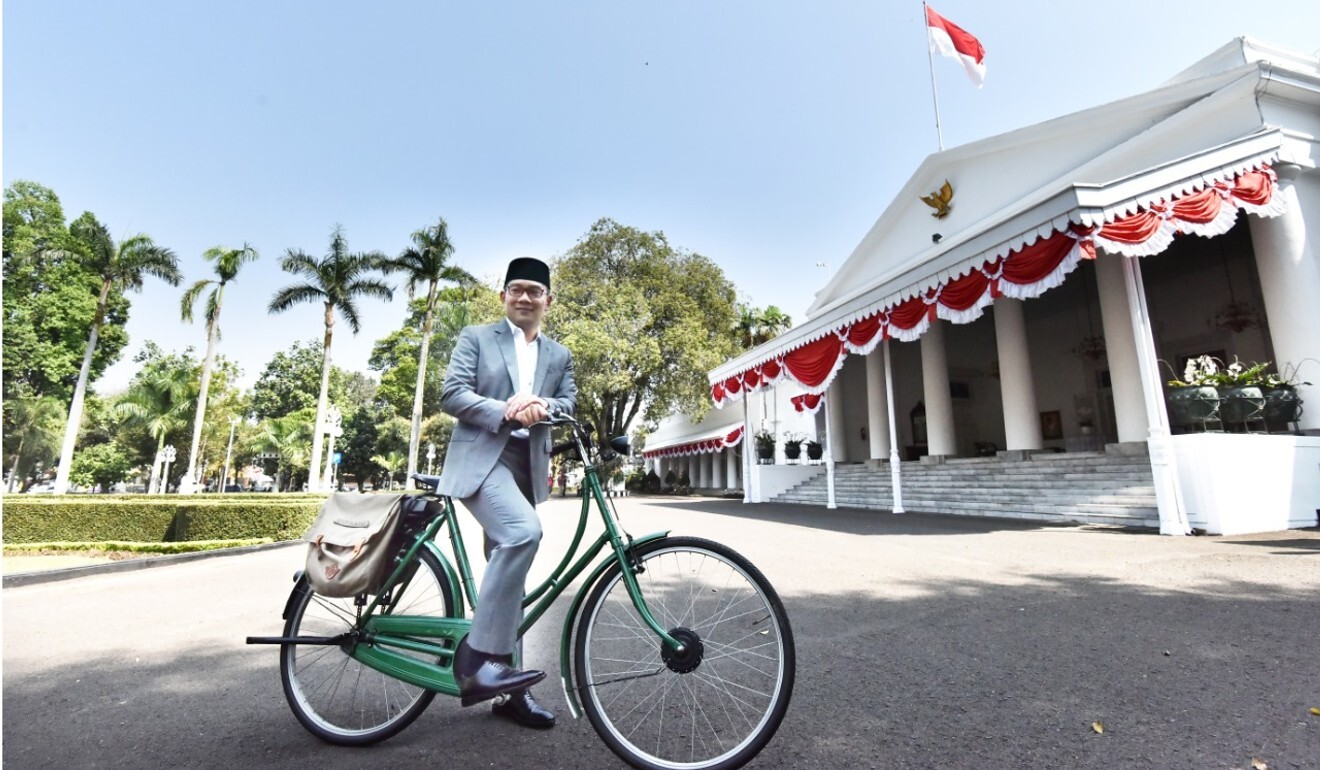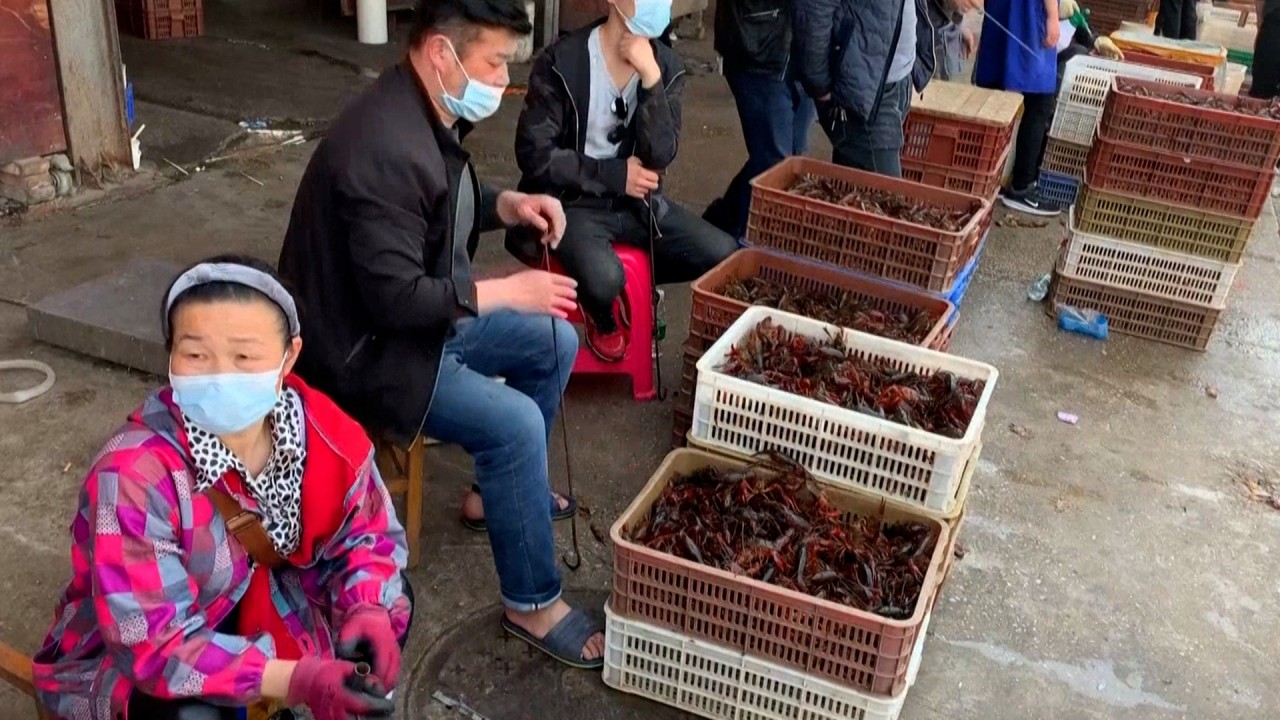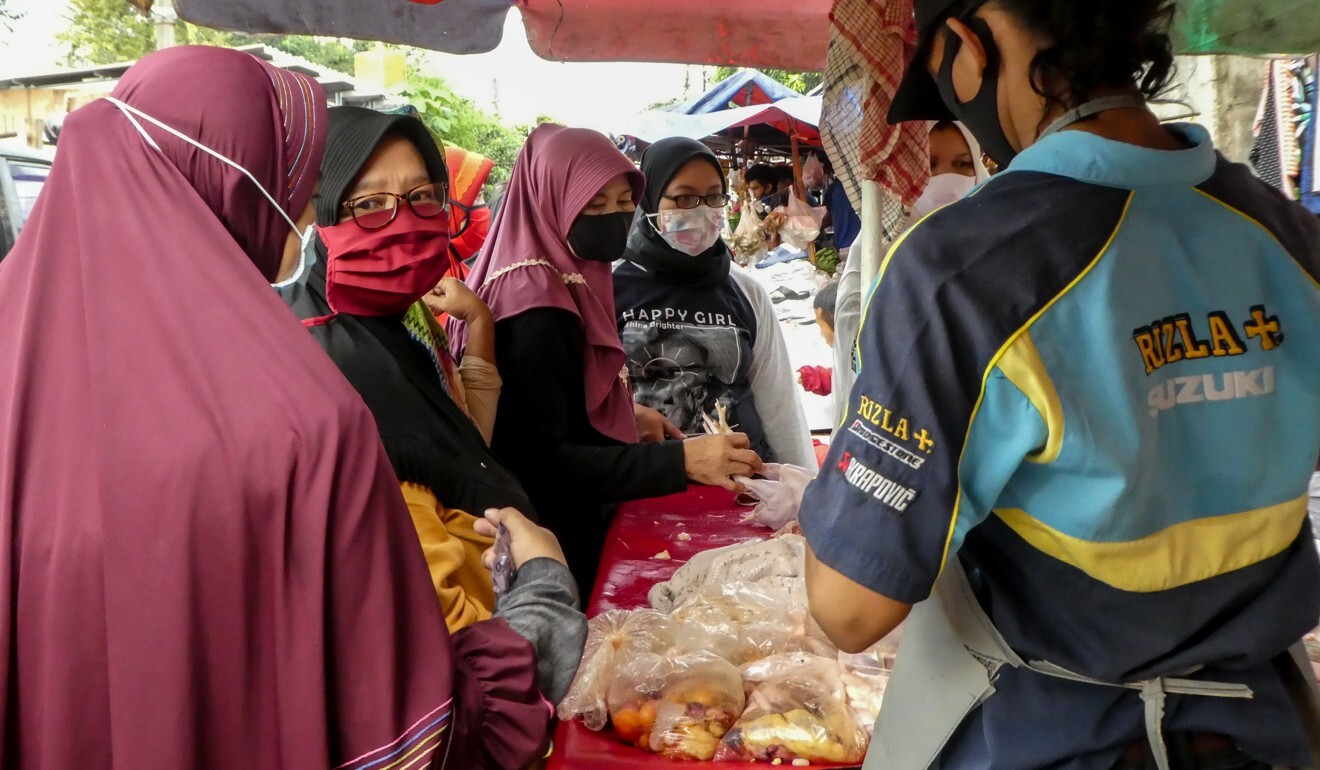
Coronavirus tests at 700 ‘high risk’ wet markets: welcome to West Java’s new normal
- Indonesian province of 50 million people has bucked a nationwide trend that has seen a surge in infections
- Elsewhere in the country, cases have surged since the easing of restrictions
The province, with a population of 50 million, lifted its strict social restrictions last week after bucking a nationwide trend that has seen a surge in infections. While across the country more than 1,000 new cases are now regularly being reported every day, West Java tends to account for fewer than 100 of these and it has kept its infection rate below the key figure of one for the past six weeks. An infection rate of one means that each infected person passes the virus to just one other on average.
The province is now using a combination of polymerase chain reaction (PCR) swab and rapid test kits to test all vendors at its 500 government-owned and 200 privately-owned wet markets. It expects all tests to be completed in the next two weeks.
West Java governor Ridwan Kamil said monitoring traditional markets would be “a priority in the new normal”.

He said such markets were higher risk than shopping malls because they had so many entrances and spilled onto the streets. He added that the province did not have markets “selling bats and other exotic animals”. Some scientists believe the coronavirus originated in either a bat or a pangolin, both of which are sold in some markets elsewhere in the country.
“We found four markets where some of the sellers tested positive for Covid-19 so we closed those markets but the majority are still open. This is how we control the virus,” Ridwan said.
Ridwan said the province’s transmission rate was now sometimes as low as 0.6 and only 27 per cent of Covid-19 hospitals beds were currently being used by patients infected with the disease. Last week, some designated Covid-19 hospitals reopened to other patients.
“We can say Covid-19 is under control,” Ridwan said.

02:27
Wet markets in Wuhan struggle to survive despite lifting of China’s lockdown to fight Covid-19
Such breakthroughs have won the province admiration.
Muhammad Habib Abiyan Dzakwan, from the Centre for Strategic and International Studies’ (CSIS) disaster management research unit, said West Java’s outbreak management had been “outstanding”.
“It is one of the good role models that other provinces should look upon. I am quite confident West Java has succeeded at least in slowing the infection, if not fully flattening the curve,” he said.
“At the beginning of the outbreak it was the province with the second highest number of Covid-19 cases and had only seven referral hospitals. Now, they have more than 150 referral hospitals and it has improved to fourth in terms of infections.”
He said monitoring traditional markets during the outbreak was “non-negotiable”.
“This is due to a significant risk of infection due to the crowded situation inside the buildings, where it is pretty hard to control hygiene,” he said.
Governor Ridwan said part of the problem was that sellers and customers lacked the discipline to wear a face mask.
Habib from CSIS said: “It would be good if regular patrols and random inspections were carried out.”
West Java is home to some of the country’s top technological universities and industries and, backed by the local government, many have lent their expertise to the fight against the virus, spurring innovation.
Coronavirus: animals are stressed in wet markets, making them prone to disease
“West Java can now produce our own ventilators, we have abundant PPE [personal protective equipment], five factories producing surgical masks and our state-owned Bio Pharma is now producing 50,000 PCR test kits per week,” Ridwan said.
The province’s industrial sector had even created a rapid test kit that was “better” than the ones from China, he said, attributing the success to an “innovative partnership between the local government, the university and business sectors”.

BIGGER PICTURE
The picture facing the rest of the country is less positive.
On Tuesday, the Health Ministry announced 1,293 new infections nationwide, bringing the total number to 56,385. It said a further 71 people had died of the disease, bringing the death toll to 2,876, the highest in Asia behind China and India. In May, it was rare for more than 1,000 new cases daily to be reported; passing that threshold has become more common in June.
Experts believe part of the reason for the increase is that some provinces have started to reopen their economies too soon.
Unlike many of its neighbours, Indonesia did not impose a nationwide lockdown and various regions have begun easing restrictions. Shopping malls, places of worship and restaurants were allowed to reopen from early June in the capital of Jakarta and some other cities.
Epidemiologist Pandu Riono, of the University of Indonesia, said the spike was due to the public not wearing masks, washing their hands or practising social distancing.
Hongkongers unfazed by speculation imported salmon linked to new Covid cluster
He also said the public was increasingly mobile, spreading the disease, and warned infections had still “not peaked”.
Indonesia’s testing ration is 2,750 for every 1 million of the population, below that of Bangladesh and Sri Lanka.
On Monday, Indonesian President Joko Widodo demanded officials raise their game after threatening to fire his ministers for lacking a “sense of crisis”.
“I want a breakthrough that the public can see and that creates an impact in the handling of Covid-19,” the president told a cabinet meeting.
The national strategy had been muddled by a lack of uniform policy across the thousands of islands that make up Indonesia, said Panji Fortuna Hadisoemarto, an epidemiologist at Padjadjaran University in Bandung.

“We can no longer estimate the peak of the pandemic nationally because policies are different for each region,” Hadisoemarto said. “If we continue with this strategy, then we will have to wait a very long time to get through this. It could be years.”
“The daily cases have worryingly continued to accelerate in recent days, suggesting that reopening may have increased the risk of transmission,” Euben Paracuelles and Rangga Cipta, economists at Nomura, wrote in a report last week.
“We believe the increase in Covid-19 cases could hamper the recovery, as demand remains weak and consumer confidence is low.”
On a visit last week to Surabaya, the country’s second-largest city, Widodo set officials a two-week deadline to bring the outbreak under control. Surabaya is the capital of East Java, which has the highest fatality rate of all of Indonesia’s 34 provinces. Having ended a partial lockdown in the city this month, Widodo reminded officials of the need to balance people’s health needs with their economic ones.
Additional reporting by Bloomberg

